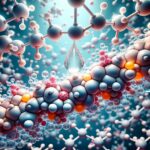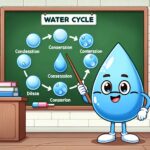Are you ready to uncover the secrets behind one of the most fascinating processes in the field of polymer science? In this comprehensive guide, we will delve into the depths of condensation polymerization, a process revered for its complexity and versatility. As a seasoned chemist with over a decade of experience in polymerization and materials science, I am thrilled to share my expertise and insights to unveil the mysteries surrounding this captivating phenomenon. Whether you are a budding scientist or a curious enthusiast, join me on this enlightening journey as we explore the intricacies of condensation polymerization and unlock a world of endless possibilities.
Condensation Polymerization Information
Condensation polymerization is a fascinating chemical reaction that occurs when two small molecules, known as monomers, come together to form a larger polymer chain. This process involves the release of a byproduct, such as water or alcohol. As a seasoned chemist with expertise in polymerization and materials science, I am excited to share with you a comprehensive guide to unlock the mysteries of condensation polymerization.
One of the fundamental characteristics of condensation polymerization is the repetitive bonding of monomers to form a polymer chain. As this process continues, the polymer chain grows, resulting in the formation of a large and complex molecule. It is important to note that the byproduct generated during this reaction is referred to as condensate. This unique feature distinguishes condensation polymerization from other types of polymerization reactions.
Condensation polymerization is also known as step-growth polymerization. This name reflects the sequential nature of the reaction, where each step involves the joining of two monomers and the release of a byproduct. This stepwise approach allows for the precise control of polymer chain length and structure, making it a versatile technique for designing polymers with specific properties.
Let’s explore some examples of condensation polymers to better understand their applications. Nylon and polyester are two well-known condensation polymers that find wide usage in the textile industry. These materials possess excellent mechanical strength, durability, and resistance to abrasion. In addition to textiles, condensation polymers have important applications in plastics and coatings industries, where their unique properties contribute to the development of high-quality products.
To engage the reader further, let’s take a closer look at the mechanism behind condensation polymerization. To initiate the reaction, monomers with two functional groups are required. These functional groups serve as reactive sites for bonding with other monomers, generating the polymer chain. The linking of monomers occurs through a condensation reaction, leading to the release of the byproduct. Thus, the polymer chain gradually forms through the repetitive addition of monomers and the removal of condensate.
What sets condensation polymers apart is their ability to involve condensation reactions between species of all degrees of polymerization or sequential addition of monomers in a chain reaction. This versatility allows for the tailored synthesis of polymers with specific characteristics, such as molecular weight and branching.
In summary, condensation polymerization offers a rich playground for scientists and engineers to create novel materials with desired properties. Its step-growth mechanism, accompanied by the release of a byproduct, allows for precise control over the polymerization process. By carefully selecting monomers and optimizing reaction conditions, a wide range of polymers can be synthesized for various applications in industries such as textiles, plastics, and coatings.
As we delve deeper into the intricate world of condensation polymers, we will uncover more exciting concepts and applications. Stay tuned as we decode the secrets behind condensation polymerization and explore its limitless potential. As we embark on this journey together, remember the power of condensation polymerization lies in its ability to transform small molecules into remarkable materials, shaping the world around us.
“Unlock the potential of condensation polymerization and witness the birth of innovative materials with tailored properties.”
Now, let’s consider a table to summarize key characteristics of condensation polymerization:
| Aspect | Description |
|---|---|
| Mechanism | Step-growth polymerization involving repetitive bonding of monomers |
| Byproduct | Release of small molecule condensate, such as water or alcohol |
| Examples | Nylon and polyester |
| Functional groups | Monomers must have two functional groups for linking |
| Applications | Textiles, plastics, coatings |
| Versatility | Involves condensation reactions between species of varying degrees of polymerization or sequential addition of monomers |
Feel free to refer back to this table for a quick overview of condensation polymerization’s key aspects.
Now that we have scratched the surface of condensation polymerization, let’s dive deeper into its intricacies. By the end of this guide, you’ll have a comprehensive understanding of this fascinating polymerization process. So, fasten your seatbelts, and let’s unravel the mysteries of condensation polymerization together!
Condensation polymerization is a fascinating process that results in the formation of large molecules through the elimination of small molecules like water or alcohol. If you’re curious to learn more about the facts surrounding condensation polymerization, click here for an in-depth exploration. Discover how different types of polymers are formed, the mechanisms involved, and the significance of this process in various industries. Expand your knowledge and dive into the intricacies of condensation polymerization by simply clicking this active internal link: facts about condensation polymerization. Happy exploring!
FAQ
Question 1
What is condensation polymerization?
Answer 1
Condensation polymerization is a chemical reaction in which two small molecules, called monomers, react with each other. This reaction releases a small molecule, such as water or alcohol, as a byproduct. The monomers bond together to form a polymer, and this process repeats to build up the polymer chain. The polymer chain continues to grow until it becomes a large, complex molecule.
Question 2
What is the byproduct of condensation polymerization called?
Answer 2
The byproduct of condensation polymerization is known as the condensate. It is a small molecule, such as water or alcohol, that is released during the polymerization process.
Question 3
What is another name for condensation polymerization?
Answer 3
Condensation polymerization is also referred to as step-growth polymerization. This term describes the process in which the polymer chain grows step by step as monomers react with each other.
Question 4
Can you give examples of condensation polymers?
Answer 4
Yes, examples of condensation polymers include nylon and polyester. These polymers are widely used in various industries, such as textiles, plastics, and coatings, due to their unique properties.
Question 5
What are the requirements for monomers in condensation polymerization?
Answer 5
Monomers in condensation polymers must have two functional groups to link up with other monomers. This allows for the formation of strong covalent bonds between monomers and enables the growth of the polymer chain.
















